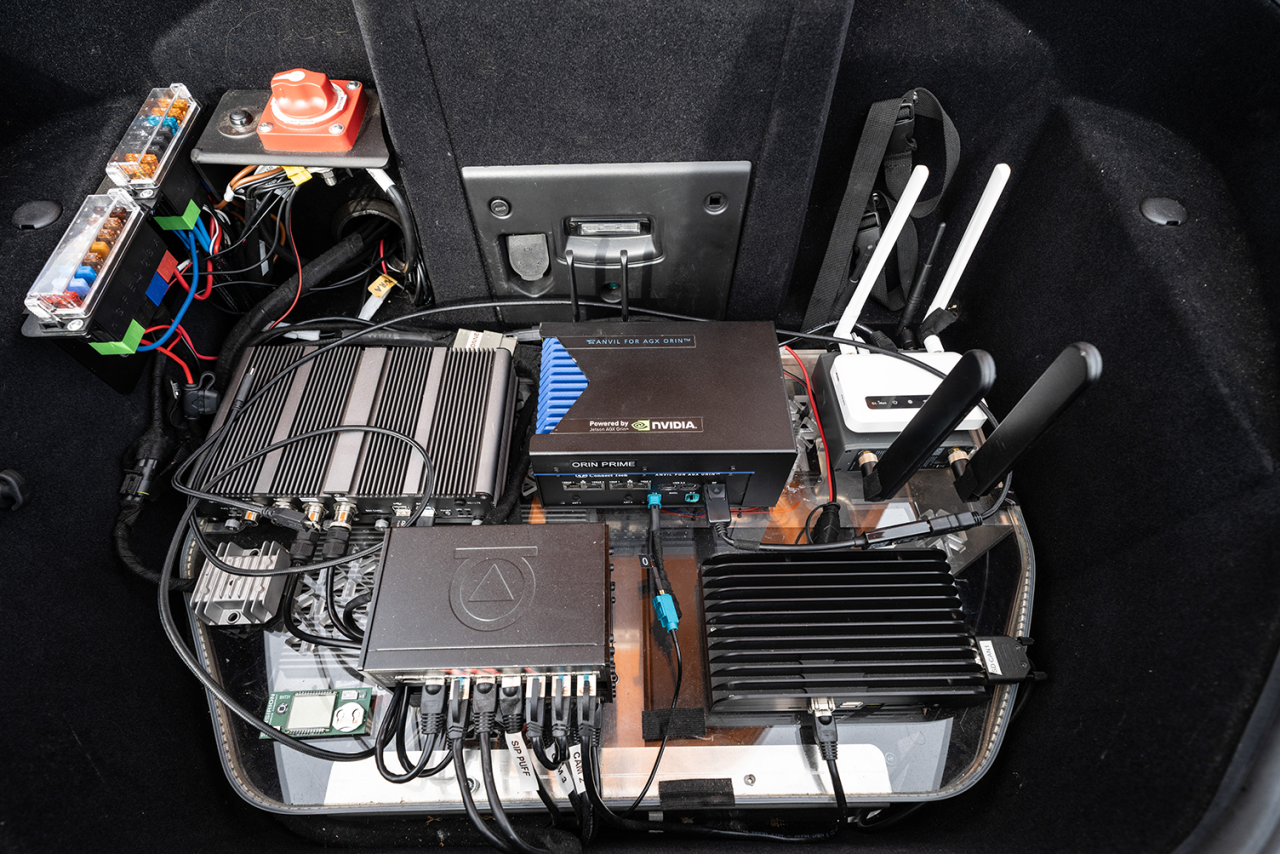Arrow Electronics and NVIDIA Collaborate on New AI-Based Steering System for SAM Car
Arrow Electronics has unveiled an AI-powered steering system for its SAM (Semi-Autonomous Mobility) Car, featuring NVIDIA's advanced Jetson AGX Orin module. This new system utilizes facial recognition to control the car via head motions, offering high accuracy and low latency, essential for speeds up to 213 mph. Quadriplegic racecar driver Sam Schmidt showcased the system's capabilities by driving competitively using head movements. The technology holds potential for broader applications, such as controlling vehicles and heavy machinery in various industries, thereby enabling multitasking for operators with physical disabilities.
- Introduction of AI-powered steering system utilizing NVIDIA's Jetson AGX Orin module.
- AI steering system achieves high accuracy and low latency, essential for speeds up to 213 mph.
- Quadriplegic driver Sam Schmidt successfully used the system at competitive speeds.
- Potential for broader applications in industries like farming, warehouses, public transit, and construction.
- Enables multitasking for operators with physical disabilities.
- No immediate commercial availability or pricing details provided.
- Potential high cost and complexity of implementation in other industries.
- Reliance on advanced technology could pose integration challenges in existing systems.
Insights
The collaboration between Arrow Electronics and NVIDIA to create an AI-powered steering system for SAM Car is a significant technological advancement. The use of NVIDIA's Jetson AGX Orin module, known for its high accuracy and low latency, shows a leap in processing capabilities. For investors, it’s important to note that this partnership capitalizes on NVIDIA’s strength in AI and machine learning. The Jetson AGX Orin module can handle complex tasks with minimal delay, which is important for applications requiring real-time responses, such as autonomous driving and advanced robotics.
From a technical perspective, facial recognition technology and real-time data processing offer innovative solutions to mobility challenges. This paves the way for future applications in various industries like agriculture, construction and public transit. By applying machine learning, the system can adapt to different users and environments, enhancing its versatility and potential market impact.
With NVIDIA's well-established reputation in high-performance computing, this collaboration could lead to broader adoption of AI-driven automation solutions. The move reinforces NVIDIA's position as a leader in AI and could attract more partnerships and investments, driving long-term growth.
The introduction of an AI-powered steering system in the SAM Car represents a major step forward in the integration of artificial intelligence in everyday applications. For investors, the potential market expansion stemming from this innovation is significant. Autonomous and semi-autonomous technologies are rapidly growing sectors, with applications extending beyond automotive into industries such as agriculture and logistics.
This development could open new revenue streams for Arrow Electronics by tapping into markets that need sophisticated automation and control systems. The versatility of the technology means that it can be customized for different industrial applications, offering broad market appeal.
Additionally, the SAM Car project highlights Arrow Electronics' commitment to leveraging cutting-edge technology for social impact, which can enhance the company's brand value and attract socially responsible investors. The partnership with NVIDIA may also result in further collaborations, bolstering product portfolios and improving competitive positioning.
CENTENNIAL, CO / ACCESSWIRE / June 12, 2024 / When it comes to advancing mobility, Arrow Electronics is helping to set a new course. With an advanced processor made by NVIDIA, Arrow has designed a first of its kind, AI-powered steering system that uses facial recognition technology to control its latest SAM (Semi-Autonomous Mobility) Car.
Quadriplegic racecar driver Sam Schmidt recently drove at competitive speeds using the new system that he steers through head motions. Arrow engineers developed the new steering system using the latest NVIDIA Jetson AGX Orin module, the only platform capable of delivering the high accuracy and low latency needed to control a car at speeds up to 213 mph.
A low-profile stereo camera pair located on the dash captures Schmidt's movements in real time and feeds the data to the NVIDIA module. Using machine learning, the system processes the information and adjusts the steering angle automatically - within a few thousandths of a second.
The new AI steering replaces the car's original four-camera steering that used an older, infrared motion-capture based technology.
"With the AI, it's more controllable," said Schmidt. "There's no lag. It's instantaneous for high speed."
The steering enhancements could have everyday applications far beyond the racetrack. The technology could be used to control vehicles and large equipment in settings as different as farming, warehouses, public transit and construction so the operator - physically disabled or not - could perform multiple tasks.
"The SAM Car has evolved into a technology platform that really personifies enabling the benefit of technology for as many people as possible," said Murdoch Fitzgerald, Arrow vice president of global engineering and design services.
About Arrow Electronics
Arrow Electronics guides innovation forward for thousands of leading technology manufacturers and service providers. With 2023 sales of
###

View additional multimedia and more ESG storytelling from Arrow Electronics on 3blmedia.com.
Contact Info:
Spokesperson: Arrow Electronics
Website: https://www.3blmedia.com/profiles/arrow-electronics
Email: info@3blmedia.com
SOURCE: Arrow Electronics
View the original press release on accesswire.com






